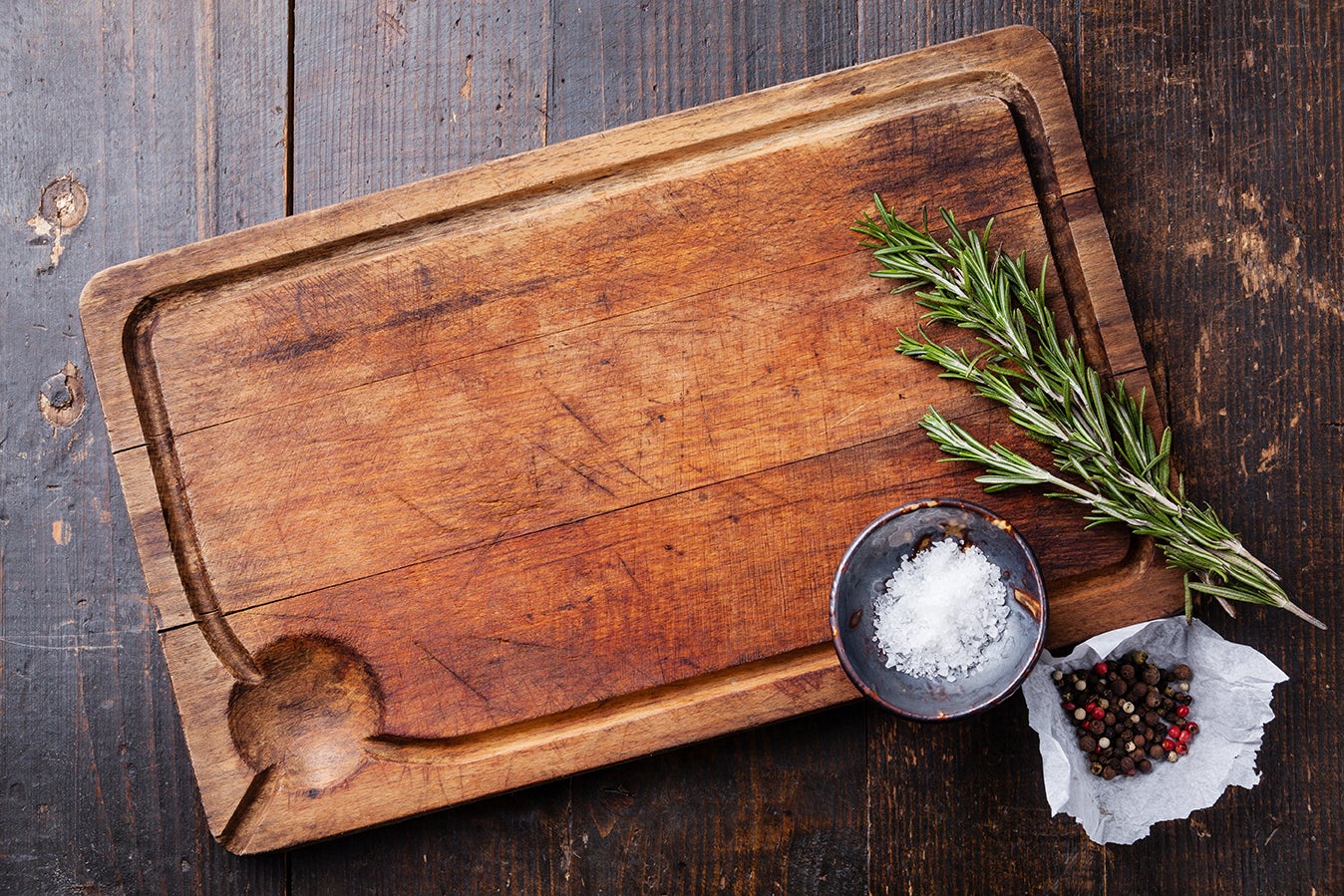Eco-Friendly Ways to Clean Your Kitchen Tools

One of the greenest things you can do in your kitchen is to invest in good-quality cookware and tools and then maintain them with care so that they last a long time. Here’s how to keep your cooking equipment sparkling clean and in tip-top condition—without spending a lot of money or using harsh chemicals.
Cast-Iron Pans
Well-seasoned cast-iron cookware requires very little maintenance. Just wash briefly in warm water after each use. “Using a mild soap is OK, but you really shouldn’t need it,” says Mark Kelly, spokesperson for Lodge Manufacturing Co., the 119-year-old foundry in South Pittsburg, Tenn. Instead, try sprinkling the pan with coarse salt and scouring residue with a sponge. After cleaning, wipe the pan completely dry to keep rust from forming. When you notice the interior of your pan is losing its smooth sheen, it’s time to re-season. Thoroughly rub the pan with the cooking oil of your choice, bake at 350°F for an hour, and wipe out any remaining oil.
Stainless Steel and Enameled Cookware
Got burnt-on stains and discoloration on the insides or outsides of your pots and pans? Use a quick DIY soft scrub mixture: mix baking soda with a few drops of warm water and just enough liquid dish soap to form a smooth paste that’s about the consistency of toothpaste. Rub on, and let sit for a few minutes, then gently scour off stains, and rinse. You can use this same mixture inside the oven to remove built-up gunk without caustic chemicals.
Kitchen Knives
Knives are your best friends in the kitchen. Hand-wash stainless steel blades in warm soapy water and wipe dry. If you have good-quality knives, get them professionally sharpened regularly—once a year may be enough, depending on what kind of knives you have and how heavily you use them. Honing the blade of your chef’s knife after each use will help it maintain a straight, sharp edge between sharpening. To hone, draw the blade at a 20-degree angle along the length of a ceramic or steel honing rod. Repeat several times on each side.
To protect the edges between uses, store knives in a wood knife block (not knocking around in a drawer) and consider using a wood cutting board: “It’s important for the cutting board to be softer than the knife blade so that it doesn’t dull the edge,” says Michael Garaghty, executive chef at cutlery company Wüsthof. “Boards made from wood and wood composite are the safest cutting surfaces for keeping your knives sharp.”
Wood and Bamboo Utensils
Spoons made from wood or bamboo will last for years if you treat them properly. To clean, wash them briefly in warm soapy water and wipe dry (never leave them soaking in water, as this opens up the grain of the wood). When your spoons start looking rough and dry—which might be as often as once a month or as seldom as once or twice a year—give them a coat of food-grade oil to moisturize and protect the wood. Our preferred oil is coconut, which resists rancidity and has antibacterial properties. Melt a little bit in a double boiler, and apply a very thin coat to your wooden utensils with a clean cloth. Allow the oil to penetrate for a few minutes, then buff thoroughly with a clean, dry cloth.
Wood Cutting Boards
To clean and deodorize your cutting board after slicing aromatic onions and garlic or foods that stain, such as herbs or beets, sprinkle the board with a little coarse salt and rub it in with the cut side of a lemon (never put your wood cutting board in the dishwasher or leave it to soak in water). After lighter use, such as chopping carrots or celery, simply wiping clean is adequate. Once a month, or more frequently if you notice your board looking dry or rough, rub the surface well with melted coconut oil, and buff it with a clean dry cloth to moisturize and protect the wood.
Counters and Appliances
Clean stove tops and dusty or grimy kitchen appliances with a simple cleaning solution. In a spray bottle, combine 1 part liquid castile soap (such as Dr. Bronner’s) with 4 parts water and 2 or 3 drops of lemon or orange essential oil. Spray the surface, and wipe with a damp cloth or sponge. For basic countertop cleaning, fill another spray bottle with equal parts white vinegar and water.
Got any go-to tricks for cleaning your cookware and kitchen tools? Share in the comments!